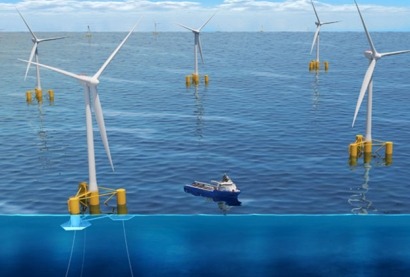
In order to meet that goal, developers will need large turbines—perhaps the largest manmade structures ever built—that can float over high-wind areas of the ocean that are too deep for today's fixed bottom offshore wind turbines.
But bringing together the design, manufacture, supply chain, and transportation components required to deploy these sizable floating offshore wind structures may be one of the biggest challenges in the clean energy transition. That challenge is exactly what the competitors in the American-Made FLoating Offshore Wind ReadINess (FLOWIN) Prize are tackling.
The U.S. Department of Energy (DOE) has just announced the winners of Phase Two of the prize, narrowing the field to five competitors with innovative ideas for streamlining the deployment of floating offshore wind energy. Each winning team was awarded a cash prize of $450,000 and a $100,000 voucher that can be used for technical support at a DOE national laboratory as they continue to refine their designs.
The FLOWIN Prize, which is administered by the National Renewable Energy Laboratory (NREL), was designed to inspire solutions to some of the biggest supply chain and execution challenges faced by offshore wind energy in support of the government's interagency Floating Offshore Wind Shot. Competing teams began with a concept for a floating offshore wind energy substructure; in the last phase, they worked to develop a pathway to produce and assemble the structure.
The following teams made the most progress in developing a plan for mass production and assembly of floating offshore wind energy platforms—they are eligible to compete in Phase Three of the prize:
These teams will now move on to the final prize phase, during which they will complete location-specific implementation pathways for domestic manufacture and deployment of their floating offshore wind energy technologies. At the end of Phase Three, up to three winners will receive a $900,000 cash prize.
The FLOWIN Prize is administered by NREL in partnership with the Oceantic Network on behalf of the U.S. Department of Energy’s Wind Energy Technologies Office in support of the interagency Floating Offshore Wind Shot.

